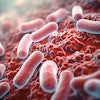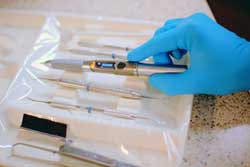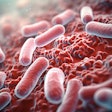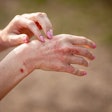Understanding the erosive potential of jawbreakers and other sour hard candies can help hygienists better explain to pediatric patients the negative effects these popular treats can have on their teeth, according to a study in the International Journal of Dental Hygiene (March 19, 2010).
Researchers from the University of Amsterdam examined the consumption patterns of jawbreakers by primary school children to determine the erosive potential of this type of candy in vivo.
They distributed a questionnaire about jawbreaker consumption to 302 children ages 10-12 years. In addition, 19 healthy volunteers tested four different jawbreakers in vivo. Whole saliva was collected 5 minutes before, 3 minutes during, and 11 minutes after consumption, and salivary flow rate and pH were analyzed.
Two-thirds of the children reported a history of jawbreaker consumption, 18% during the previous week. More than half estimated their average time for consumption of one jawbreaker to be more than 15 minutes.
In vivo, the jawbreakers induced an 8.6- to 13.9-fold increase in salivary flow rate. Sucking on sour, jumbo, and strawberry jawbreakers induced a drop in salivary pH to values below pH 5.5. During consumption of fireball jawbreakers, however, the intraoral pH hardly changed.
Jawbreakers are frequently consumed by children and kept in their mouths for long periods of time, the researchers noted. But these candies differ considerably in their erosive potential, with sour and jumbo jawbreakers topping the list.
"This information is of use for dental hygienists counseling juvenile patients with dental erosion," the researchers concluded.
Copyright © 2010 DrBicuspid.com



















